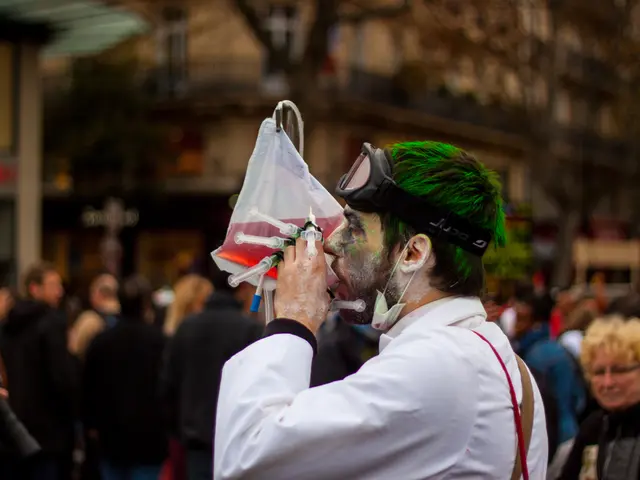Hamburg's waterways have been shut down once more.
Headline: Öjendorfer See Closed to Swimmers Due to Blue-Green Algae Presence
The Öjendorfer See in Billstedt, Hamburg-Mitte district, has been closed for bathing due to the discovery of blue-green algae (cyanobacteria). This is not an unprecedented event, as the lake has experienced periodic blooms of cyanobacteria in the past, particularly during summer months.
Historical Context of Blue-Green Algae in Öjendorfer See
The presence of blue-green algae in Öjendorfer See can be attributed to various factors, including eutrophication due to nutrient inputs from agricultural runoff, urban wastewater, and stormwater. Historical records indicate periodic blooms of cyanobacteria, with species like Microcystis, Anabaena (now Dolichospermum), and Aphanizomenon being commonly observed. These species can produce toxins (cyanotoxins) that pose health risks to humans and wildlife.
Broader Trends Affecting Occurrences
The occurrence of cyanobacterial blooms in Öjendorfer See, like many urban lakes, has been influenced by climate change, urbanization, and restoration efforts. Warmer summers and changing precipitation patterns have contributed to longer and more intense blooms. Increased impervious surfaces and altered hydrology in Billstedt affect nutrient flow into the lake. Some projects have aimed to improve water quality through biomanipulation and measures to reduce external nutrient loading.
Current Situation
The Hamburg-Mitte district office conducted a water test that revealed a strong spread of blue-green algae in the Öjendorfer See. As a precautionary measure, the district office has announced a bathing ban for the lake. Swimmers are advised to avoid the Öjendorfer See due to the presence of blue-green algae and the resulting bathing ban.
Drinking large amounts of contaminated water from the Öjendorfer See can lead to nausea and vomiting, while skin contact may cause irritation, inflammation of mucous membranes, conjunctivitis, ear pain, and allergic reactions in sensitive individuals.
If you require detailed historical datasets or scientific studies about Öjendorfer See’s algal blooms, local environmental agencies like the Hamburg Water Protection Authority (Behörde für Umwelt, Klima, Energie und Agrarwirtschaft - BUE) or academic research institutions conducting limnological studies in Hamburg could be contacted.
The presence of blue-green algae in the Öjendorfer See, often associated with nutrient inputs from agricultural runoff, urban wastewater, and stormwater, has historically resulted in health risks for both humans and wildlife. This is because various cyanobacteria species, such as Microcystis, Anabaena (now Dolichospermum), and Aphanizomenic, can produce toxins (cyanotoxins) harmful to health-and-wellness. Due to the discovery of these harmful algae, swimming in the Öjendorfer See, which has been closed due to the blue-green algae presence, should be avoided for health-and-wellness reasons.






